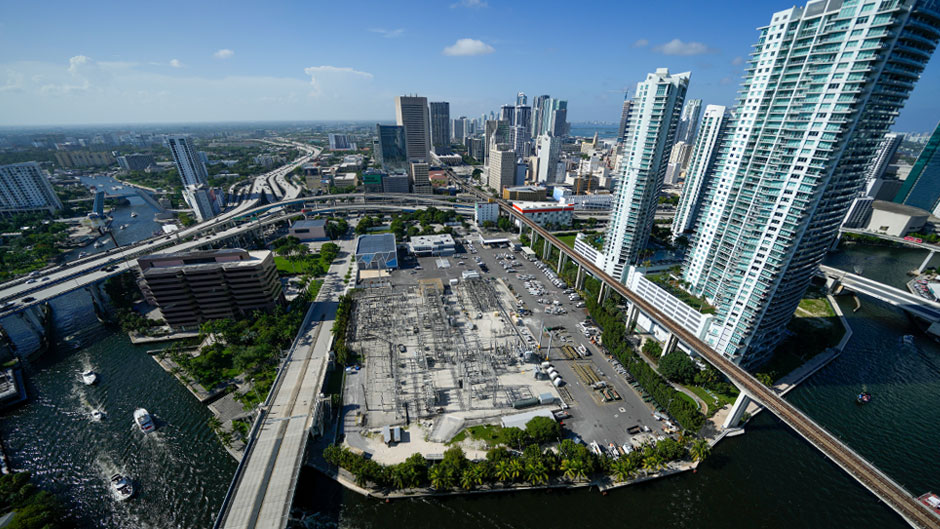Within days after the partial collapse of the Champlain Towers South condominium in Surfside, Florida, investigators with the U.S. Department of Commerce’s National Institute of Standards and Technology vowed to conduct a thorough probe into the disaster, promising to cooperate with local and state investigators.
It could take months, if not longer, however, to determine what caused the catastrophe. But what is clear in the immediate aftermath of the incident is that the collapse could usher in a new era of building codes in the state, which are already among the most stringent in the nation.
“Catastrophes, whether natural or linked to human activities, often afford opportunities to reexamine the status quo and through thoughtful examinations and dialogues, thereafter, determine if adjustments may be needed in our local building and urban codes. We find ourselves precisely at that intersection,” said Sonia Chao, a research associate professor at the University of Miami School of Architecture and director of the Center for Urban and Community Design.
Chao sees the Champlain Towers South collapse as a similar catastrophe to Hurricane Andrew, a category-5 cyclone that struck South Miami-Dade County on Aug. 24, 1992, destroying more than 25,000 homes.
In the wake of the storm’s destruction, Florida’s building code underwent a major transformation that resulted in the construction of more robust structures resistant to strong winds. “But other factors such as sea level rise and growing hydrostatic pressure on structures were not folded into the codes,” Chao said.
As the effects of climate change will only increase and threaten low-lying areas with rising sea surge, more intense hurricanes, higher temperatures, and more rainfall, it is time to establish codes that can mitigate damage and erosion to existing structures, she explained.
Chao said the 7th Edition (2020) update to the Florida Building Code, the latest revision that went into effect on Jan. 1, incorporates some aspects to help with issues of sustainability. But more codes need to be implemented to ensure the safety of South Florida communities.
“For example, what happens down the line when saltwater makes its way even further into the aquifer system, rendering septic tanks and wells less viable, or agricultural fields less arable, or our streets and yards are overwhelmed by increased daylight flooding and ‘King tide’ flooding events?” she said.
Chao has conducted research to determine which buildings in Miami-Dade County are more vulnerable to storm surge.
“We identified that buildings constructed between the mid-1960s through the 1994 revision of the South Florida building code were more vulnerable due to a variety of reasons, including but not limited to a switch to truss roof systems, concrete slabs on grade, and shoddy construction practices,” she explained.
In her years as an expert on sustainable structures, Chao has attended public forums, conferences, and leadership summits, calling for changes to local building codes in the face of climate change.
“Building and urban codes can be very effective at extending the viability of South Florida into the future, but they are exponentially more effective at protecting the health, welfare, and safety of our community if they are mindful of our specific types and levels of weather and climate related challenges,” Chao said.
She noted that those codes should not only be introduced and enforced as soon as possible but also revisited with frequency as climate-related challenges increase over time.
Chao said it is critical that engineers and other experts do a thorough investigation into the cause of the collapse of the 12-story condo, the remaining portion of which was demolished on July 4. Such a probe, she noted, could help lead to better permitting and inspection procedures of condominiums.
Built in 1981, the Champlain Towers South condo was undergoing a 40-year recertification, a process that requires an engineer to inspect a structure and ensure its structural and electrical safety. Such a recertification can reveal damage that requires repair. In the case of the Surfside condo, an engineering report revealed the building needed millions of dollars in repairs to fix major structural damage.
“Due to our increasing climate related stressors and shocks, which increase the wear and tear on structures, we should probably have shorter building recertification windows as well. But this would entail increasing the capacities of local building and permitting departments,” Chao pointed out.
Could state-of-the-art construction techniques such as the use of corrosion-resistant rebars made of glass fiber reinforced polymers (GFRP) help mitigate the damage that saltwater and other climate-related conditions inflict on such large structures? “Perhaps,” said Christian C. Steputat, a forensic engineer specializing in structural, geotechnical, and materials engineering who is a Ph.D. candidate in the College of Engineering. “But it will take improving and hopefully perfecting the GFRP rebar installation technique in larger structures to make that happen.”
Because of their ability to resist corrosion in highly aggressive environments, GFRP rebars are used extensively in foundations and columns that are used to build parking garages and wastewater treatment plants. But for longer spans of concrete slabs used in mid-rise or even high-rise buildings, GFRP rebars would tend to deflect, or sag, more than steel, said Steputat, who has worked on design, inspection, and construction projects all over the world.
Pre-stressing or partially pre-stressing the GFRP rebars, a process in which they are elongated prior to being cast in concrete, might help solve that problem, according to Steputat, who is conducting research on doing just that. “If that can be safely and successfully done, it could substantially improve the overall performance of elevated GFRP-reinforced concrete deck slabs,” he said.
When it comes to addressing damages to buildings caused by either the environment or human activity, the “bucket can no longer be kicked down the road,” Chao said, “because if we do, the bucket will find itself below flood waters, and by then, many opportunities would have been lost.”

